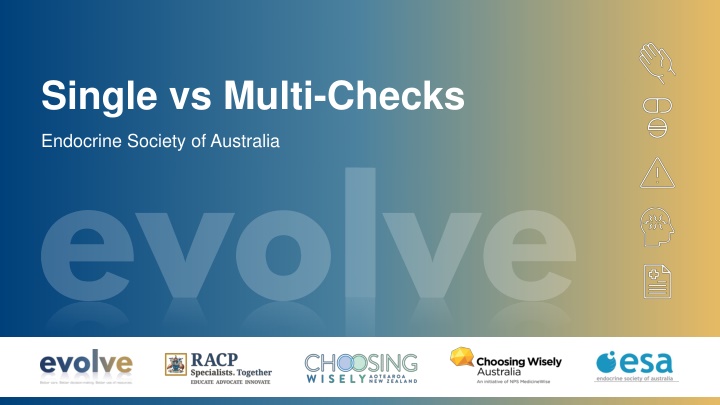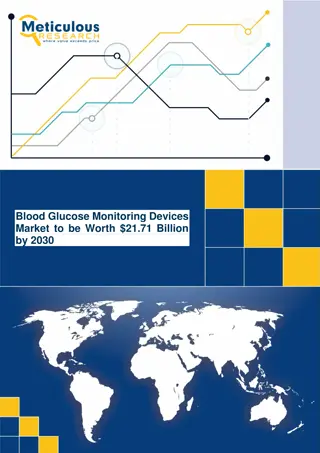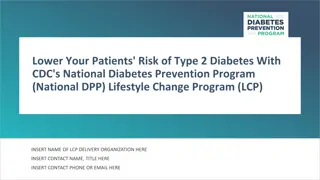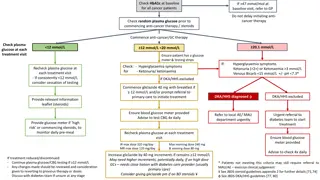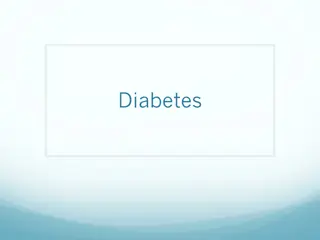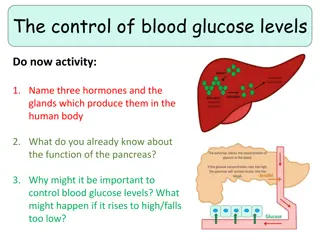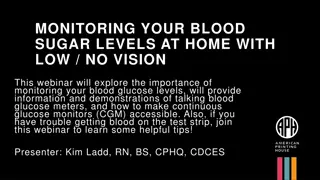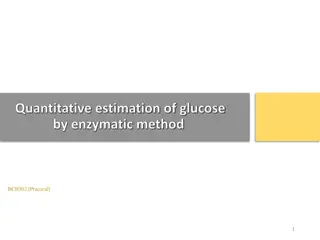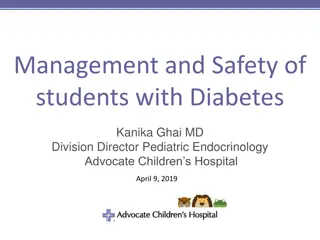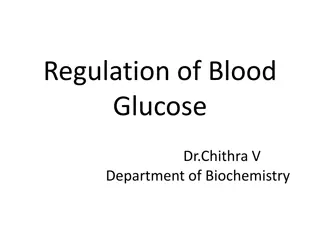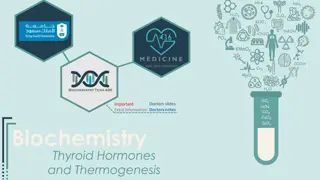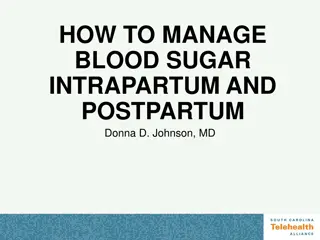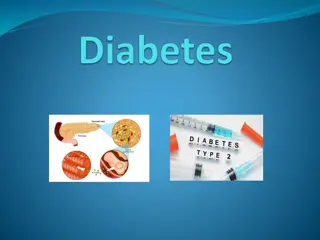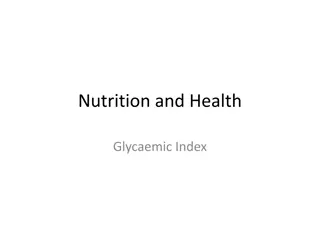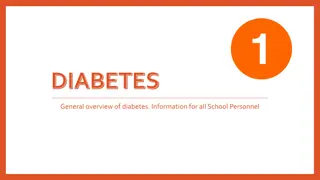Blood Glucose Monitoring in Type 2 Diabetes
In a case study involving a 68-year-old man with Type 2 Diabetes and a foot ulcer, the importance of blood glucose control and monitoring frequency is discussed. The patient's optimal control with HbA1C of 6.4% and medication regimen are highlighted, leading to the conclusion that daily blood glucose checks may not be necessary for him. Recommendations from the Endocrine Society of Australia regarding glucose monitoring in stable Type 2 diabetes patients are also presented.
Download Presentation

Please find below an Image/Link to download the presentation.
The content on the website is provided AS IS for your information and personal use only. It may not be sold, licensed, or shared on other websites without obtaining consent from the author.If you encounter any issues during the download, it is possible that the publisher has removed the file from their server.
You are allowed to download the files provided on this website for personal or commercial use, subject to the condition that they are used lawfully. All files are the property of their respective owners.
The content on the website is provided AS IS for your information and personal use only. It may not be sold, licensed, or shared on other websites without obtaining consent from the author.
E N D
Presentation Transcript
Single vs Multi-Checks Endocrine Society of Australia
Ali Patient medical history (PMHx) 68-year old man T2DM for 5 years Peripheral vascular disease previous left 1st toe amputation in April 2019 Hypertension Dyslipidemia Symptoms Referred by GP to High risk foot service (HRFS) Chronic left plantar foot ulcer under 2nd metatarsophalangeal joint for the last 4 months Reviewed in HRFS by multidisciplinary teams vascular, endocrine, infectious disease, podiatry teams
Ali Current medications: Sitagliptin/Metformin XR 50mg/1000 mg BD Atorvastatin 20 mg nocte Ramipril/Felodipine MR 5 mg/5 mg OD Aspirin 100 mg OD
Ali Examination left plantar foot ulcer under 2nd metatarsophalangeal joint level clean and dry, 6mmx10mm ulcer improving with off- loading Faint pedal pulse at dorsalis pedis and posterior tibial arteries Normal anterior tibial, popliteal and femoral pulses multiple finger prick scars at the finger tips Tests / Investigations HbA1C point of care testing 6.4% Left second toe pressure measurement = 50 mmHg Doppler left leg ultrasound = tri-phasic flow at anterior tibial artery
What do we think of his blood glucose control? Optimal control Suboptimal control
How often should he be checking his BGL in a day? Once daily Twice daily Four times daily Not required
Ali Daily blood glucose check is not required in his case He has optimal diabetes control with HbA1C of 6.4% and he is not prescribed an agent with a high risk of hypoglycemia such as sulphonylureas or insulin
Evolve Recommendation Avoid multiple daily glucose self-monitoring in adults with stable type 2 diabetes on agents that do not cause hypoglycaemia The Endocrine Society of Australia Evolve is facilitated by the Royal Australasian College of Physicians
What is best practice? When should you check blood glucose levels? How often you should check varies depending on each individual, the type of diabetes and the tablets and/or injectable drugs such as GLP1 agonists or insulin being used. The most valuable times to check blood glucose levels for T2DM patients : Fasting or before meals or 2 hours after meals or before bed or when unwell. Levels at different times of the day give different information about glucose management However, multiple daily checks are not required if the patients with diabetes are not prescribed medications with a high risk of hypoglycaemia
What is best practice? How can blood glucose management be assessed for those T2DM patients who are not checking blood glucose multiple times per day? The HbA1c check reflects the average blood glucose level over the past 10 12 weeks. It can be checked every 3 6 month. HbA1C is a reliable marker for blood glucose control. However, anaemia, pregnancy and chronic renal disease are the most common conditions among the many other causes of unreliable HbA1C. The goal for most people with diabetes will be in the 6.5-7 percent (48-53mmol/mol) range, however this may need to be higher for some people including children and the elderly and be lower for pregnancy. Therefore, HbA1C target needs to be individualized.
What is best practice? The disadvantages of multiple daily checks in patients with optimal control of diabetes Daily monitoring can be inconvenient Monitoring can be expensive with the cost for test strips Multiple checks may lead to painful finger tips
Glucose level targets Normal blood glucose levels are between 4.0-7.8mmol/L
References https://evolve.edu.au/recommendations/esa Diabetes Australia https://www.diabetesaustralia.com.au/blood-glucose-monitoring
How this case study was made This case study was developed by Dr Su Win Htike as a member or the RACP Evolve Policy Reference Group. This case study has been reviewed by the RACP Evolve Policy Reference Group in particular Prof Jane M Andrews, the Australian Diabetes Society, the Endocrine Surgery section of the Royal Australasian College of Surgeons, and NPS MedicineWise. This case study was approved for publication by the Endocrine Society of Australia Medical Affair Committee in August 2020.
Evaluation How likely is this Evolve recommendation to change your practice? 1. Not at all 2. Somewhat 3. Significantly Explain your reasoning
About Evolve As part of a global movement, Evolve is a flagship initiative led by physicians, specialties and the Royal Australasian College of Physicians (RACP) to drive high-value, high-quality care in Australia and New Zealand. Evolve aims to reduce low-value care by supporting physicians to: be leaders in changing clinical behaviour for better patient care make better decisions, and make better use of resources. Find out more: www.evolve.edu.au Get in touch: evolve@racp.edu.au
